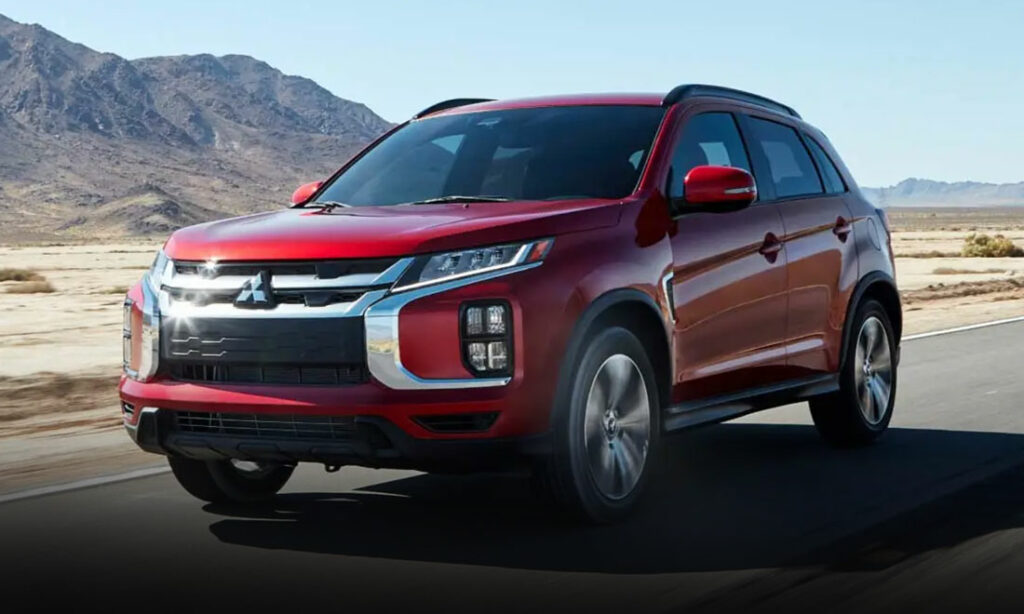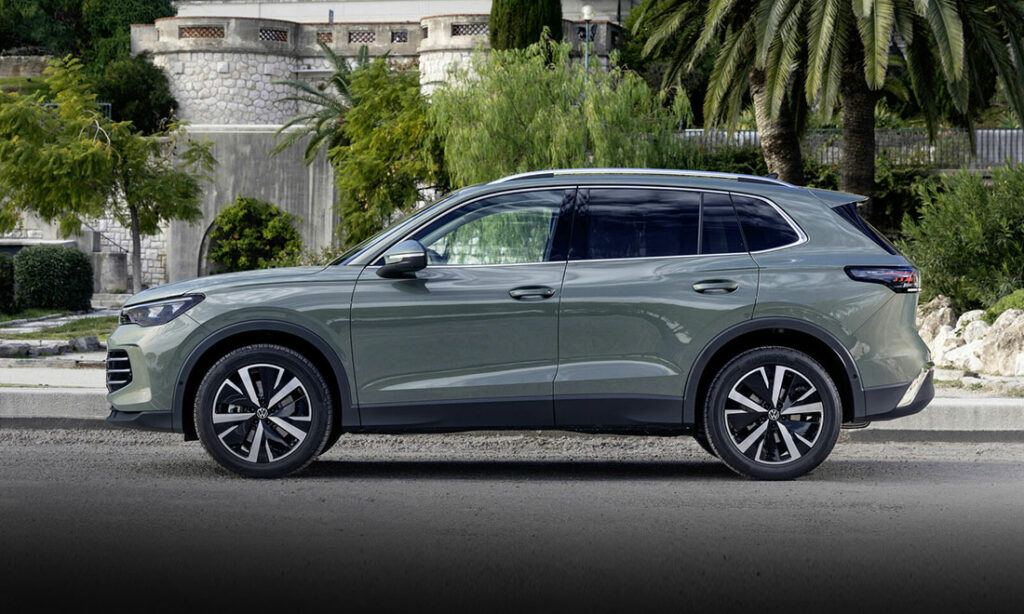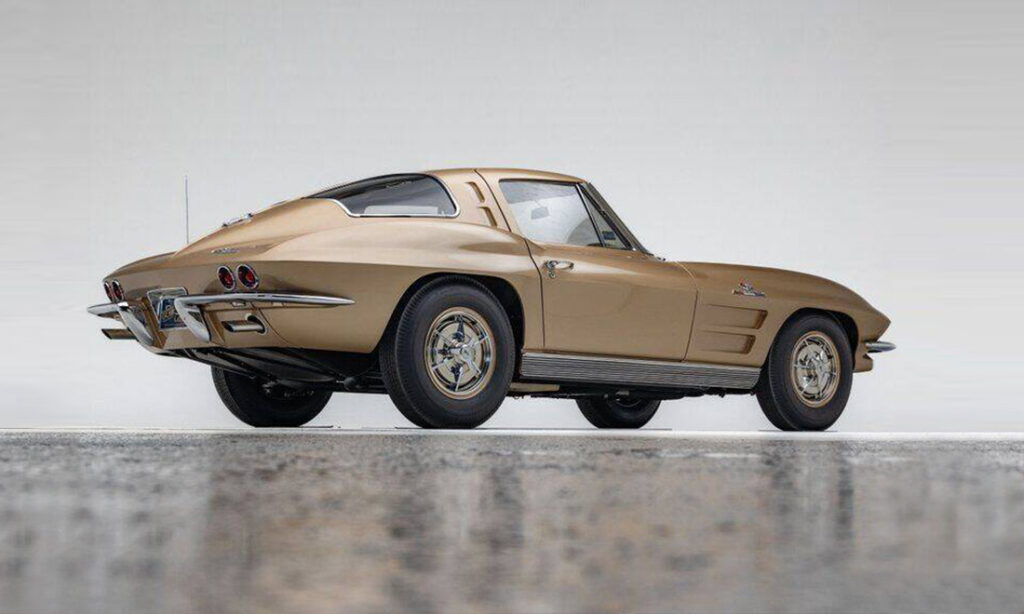In the US, no sedan matches the Toyota in raw sales numbers. We look back through the years at all the Camry generations to find what’s made it popular.
The Humble Champion
Carrying superlative titles like fastest, fanciest, or toughest usually comes with a degree of swagger. Jeep, Rolls-Royce, Bugatti have built their brands around being the best in their given domains. We associate those names with greatness and still imbue them with awe even long after they’ve been eclipsed by other companies and other cars. And yet the title of the most popular, best-selling, most ubiquitous car on the road flies right under the radar. Some champions feel the need to proclaim their greatness from the roof tops, but Toyota’s Camry is content with letting the record books tell the tale. So, let us reflect a moment on the Camry’s record of over 12.5 million cars sold in the US, an annual average of over 300,000 units sold, and over two decades as the number one selling passenger car in the US.
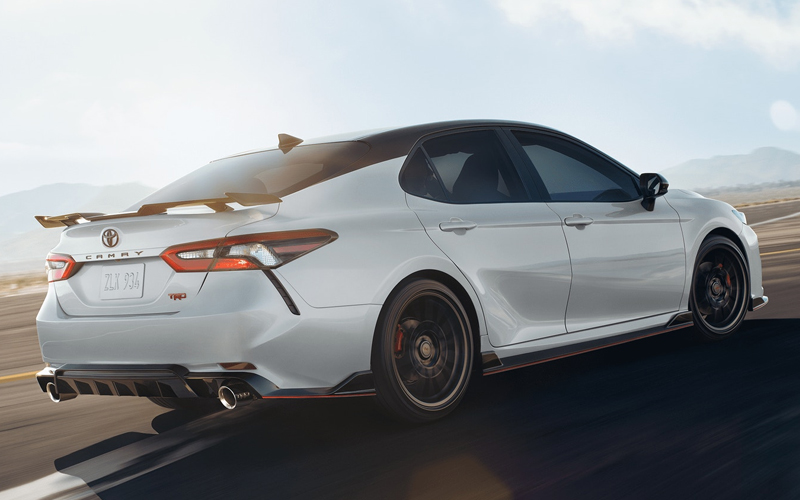
2021 Toyota CamrTRD – toyota.com | Shop new Toyota Camry on Carsforsale.com
The Toyota Camry, even in its latest and by far flashiest incarnation, won’t wow the neighbors like a new C8 Corvette might. But then, curb appeal has never been the pursuit of the Camry. Instead, the humble Toyota Camry became the sales champ based on practical concerns like affordability, fuel efficiency, and reliability. For the great masses of people who just wanted to get from A to B and not worry, or really care at all, about their car, the Camry became the go-to choice. We take a look back at the evolution, generation by generation, of the most modest of sales juggernauts, the Toyota Camry.
First Generation 1983-1986
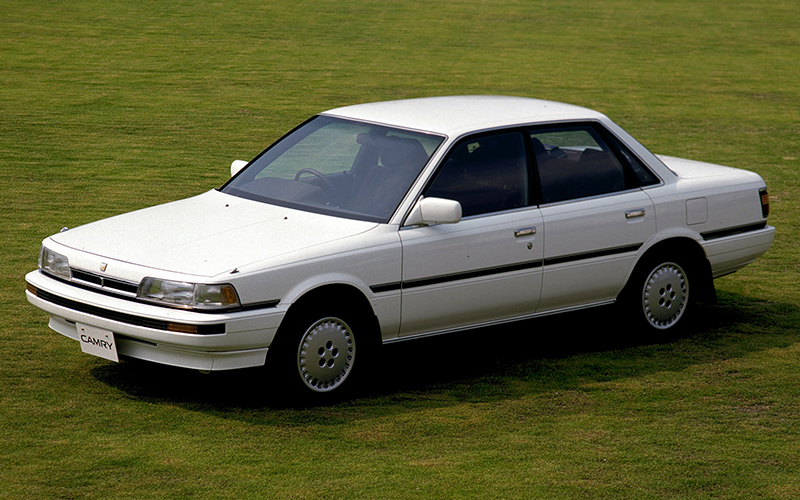
1983 Toyota Camry – toyota.com | Shop Toyota Camry on Carsforsale.com
- With the onset of the 1973 Oil Crisis, Japanese manufacturers specializing in small, fuel-efficient passenger cars began to make significant inroads in the US automotive market. One such company was Toyota.
- Like Ford’s Escort and Chrysler’s K-cars, Toyota’s compact Corolla had seen huge success in the 1970s as automotive demand in the US and abroad shifted from bulky sedans with oversized engines to smaller cars with low displacement engines.
- The Camry nameplate began life in Japan as an offshoot of the Toyota Celica (though it shared more mechanically with the Toyota Carina).
- In 1982, the Camry proper began production in Japan for the 1983 model year.
- The first-generation Camry came in two body styles: 4-door sedan and 5-door hatchback.
- Two engines were initially offered, a 1.8L 4-cylinder making 90hp and a 2.0L producing 107hp. Both could be optioned with either a five-speed manual or four-speed automatic transmission.
- In 1984, a 1.8L turbodiesel engine option was added. It came exclusively with the five-speed manual transmission.
- An emphasis on affordability, reliability, and comfort proved to be a winning formula for the Camry, Toyota, and Japanese brands in the US as a whole (with the likes of the Honda Accord also seeing huge sales successes).
Second Generation 1987-1991
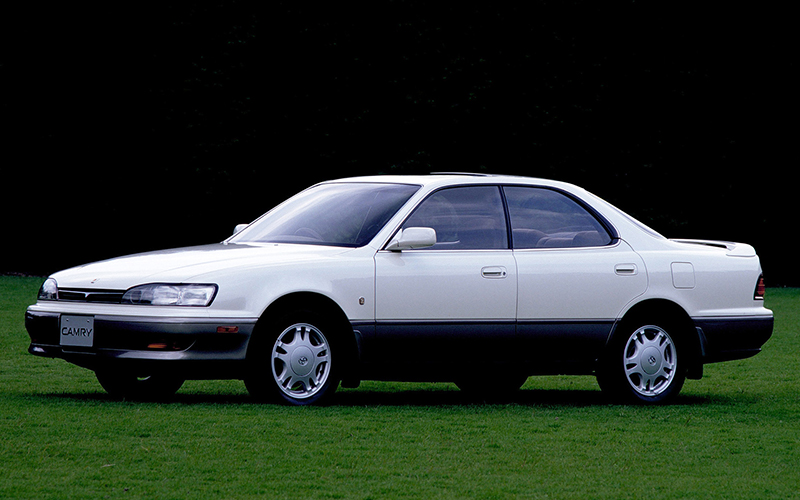
- As the beginning of a long-running trend with the Camry, the compact car got slightly longer, adding to interior and cargo space.
- For 1988, the Camry added an all-wheel drive option dubbed “All Trac” by Toyota.
- Another new addition was a 2.5L V6 which saw the Camry jump up to a full 160 horsepower.
- The second-generation Camry dropped the hatchback option in favor of a wagon version.
- Both in 1988, sales of the Camry crested 200,000 units in the US and independent North American manufacturing began at Toyota’s new plant in Georgetown, Kentucky.
- The second-generation Camry was used as the basis for the Lexus ES 250 sedan.
- A 1989 refresh brought new bumpers front and back as well as updates to the suspension and steering.
Third Generation 1992-1996
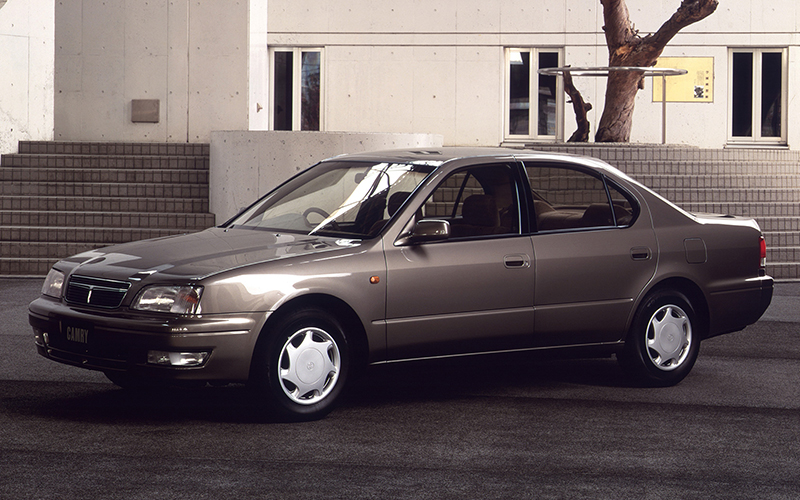
- In a significant shift, the Camry was moved to a widebody configuration. It was now considered a mid-size rather than a compact car.
- Like most vehicles in the 1990s, the body lines of the third-generation Camry were smoothed over and aerodynamics improved.
- The Camry continued to share underpinnings from the Lexus ES. As quality improved with this generation of Camry, some within Toyota worried that the line between the brands would be blurred.
- A new V6 replaced the prior iteration (now making 188hp) and could be optioned along side the carried over 2.2L 4-cylinder.
- The two-door Camry coupe debuted for the 1993 model year and came with either the I-4 or V6 engine. This coupe version only lasted through 1996 and the third generation.
Fourth Generation 1997-2001
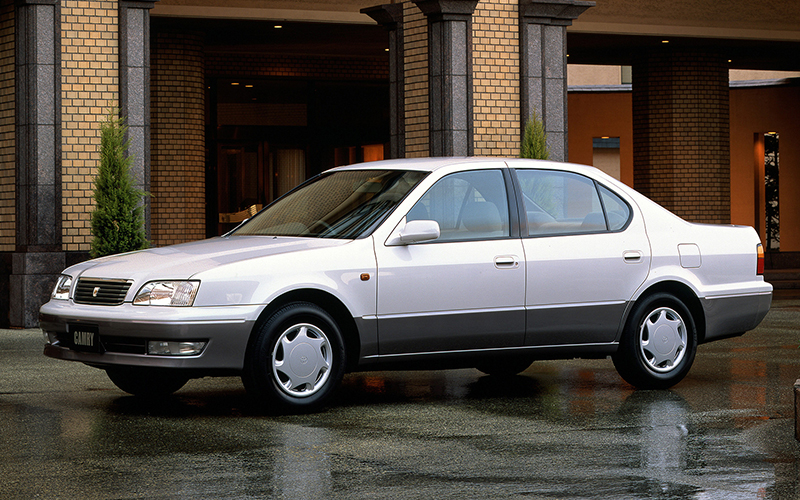
- The Camry continued to grow in size in it’s fourth generation, gaining two inches in length.
- 1997 was the first year the Camry became the best-selling car in America, the beginning of a long-running trend.
- Two new engines entered the mix, a new 2.2L I-4 and a new 3.0L V6 now making 192 horsepower. Despite the uptick in power, this generation of Camry proved slightly slower than the prior one.
- Manual transmissions could still be found in the Camry, available in conjunction with the V6 at both the base CE and LE trim levels.
- The Camry was growing into its mid-sized body and leaving the classically boxy body style behind. Lines were further smoothed out and the front grille and hood became sleeker.
- In 1999, the coupe body style returned for the Camry with the introduction of the Solara. Coming in both coupe and convertible bodies, the Solara departed significantly from the Camry proper with a longer sloping hood and windshield and unique grille.
- Equipped with the V6, the Solara coupe was actually faster than its sedan counterpart with a 0 to 60 time just under seven seconds. The heavier, less aerodynamic convertible moved in the opposite direction by actually slowing down to a dawdling 8.4-second travel to 60 mph.
Fifth Generation 2002-2006
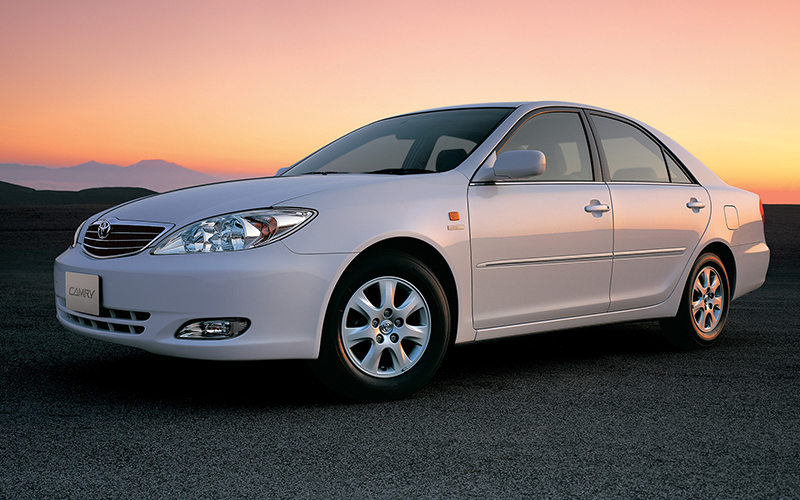
2012 Toyota Camry – toyota.com | Shop Toyota Camry on Carsforsale.com
- The Camry continued to gain size in its fifth generation becoming both taller and longer and offering increased interior room.
- The base engine was upgraded to a 2.4L 4-cylinder producing 157hp.
- The wagon body style was discontinued for the fifth generation, as minivans and SUVs continued to gain market share. This roughly coincided with the rise of Toyota’s Sienna minivan.
- Styling on the Camry continued to be nondescript on the outside, setting the design bar for “generic sedan.” Emphasis remained on comfort and ease of use with the interior consistently delivering high quality relative to the price of the vehicle.
- In 2004, the Solara received its own revamping. The design was evened out a bit with a less radically sloping front end and a greater balance to the overall proportions. Both the coupe and convertible versions got a bit fast in this generation, clocking a new 0 to 60 time of 7.1 seconds.
- Also in 2004, a new 3.3L V6 was introduced the SE trim level.
Sixth Generation 2007-2011
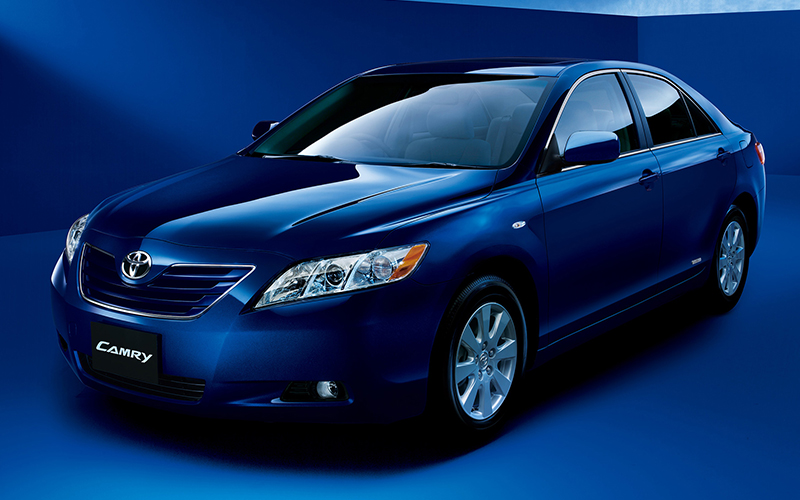
- The sixth generation of Camry grew in size yet again.
- In 2007, the Camry hit another sales milestone by notching over 400,000 units sold in a single year.
- Replacing the 3.3L V6 came a new 3.5L making an impressive (for the Camry at least) 286hp. This made the Camry considerably faster, nearing a mere 6 seconds to 60mph. Even the 4-cylinder of this generation was getting up to highway speeds in close to 8 seconds.
- Also starting in the sixth generation was the availability of a hybrid powertrain in the Camry with the introduction of the Toyota’s Hybrid Synergy Drive. Featuring a 2.4L 4-cylinder engine and an electric motor, the hybrid Camry made a combined 187hp and achieved 33 city mpg rating.
- 2009 saw the demise of the Solara coupe/convertible.
Seventh Generation 2012-2017
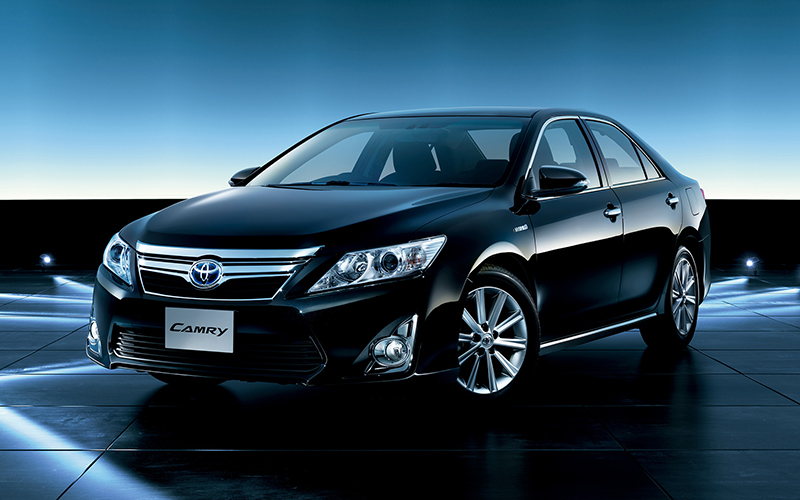
- The seventh-generation Camry received its most thorough styling refresh to date. In a departure from its long running ho hum design language, the 2012 Camry gained a sportier front end. The new front spoiler, upturned grille and mischievously arched headlights all looked aggressive, if unconvincing so. The rest of the car, however, looked like the designers lost some steam by leaving most of the car behind the front quarter panels as plain as ever.
- The manual transmission was finally dropped from the Camry.
- A revamped 3.5L V6 produced slightly fewer ponies at 268hp, but improved the Camry’s acceleration to under 6 seconds from 0 to 60 mph.
- The hybrid also got retooling and now pushed to 200hp and a respectable 7 second 0 to 60.
- The already comfort-oriented Camry also improved its ride quality and interior.
- A mid-cycle refresh in 2015 brought a larger lower grille (shades of the coming grille wars of the 2020s) along with additional chrome accenting and sharply restyled headlights and fog lamps.
Eighth Generation 2018 – Present
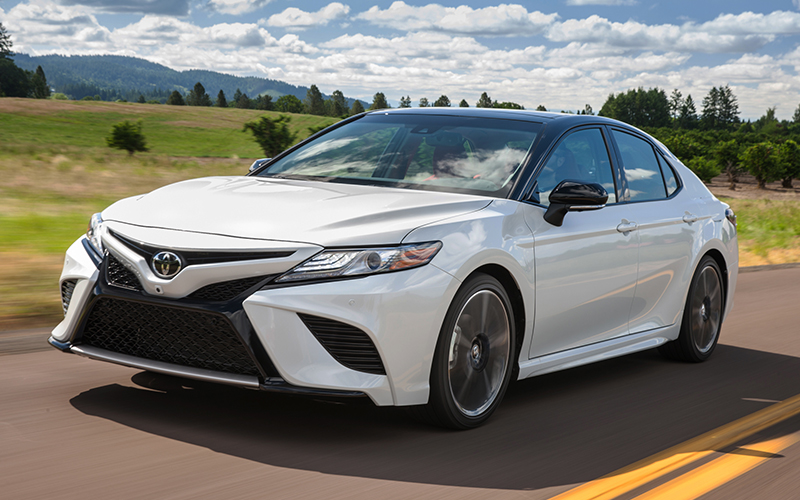
- The Camry doubled down on the new styling hinted at with the 2015 refresh. For the eighth generation, the Camry got a modern, chic new look that included a radical new grille, sharp new angles to beefier paneling, and an aggressively styled nose.
- The eighth-generation Camry migrated to Toyota new modular TNGA platform shared with the likes of the Corolla, Avalon, Prius, RAV4, Highlander, and, bringing things full circle, the Lexus ES.
- The Camry also got new powertrains in the form of a more powerful 2.5L I-4, now speeding up to 60 mph in 7.6 seconds. Plus, the Camry topped 300 horsepower for the first time with the new 3.5L V6 making 301hp.
- In 2020, a TRD (Toyota Racing Development) trim was added. Aside from an updated suspension, this was largely a cosmetic upgrade (including a rear spoiler and blacked out wheels) as the TRD shared the same V6 with the XSE and XLE trims. Still, the 5.8 second 0 to 60 time isn’t too bad.
- For 2021, the Camry gets a mid-generation refresh with even more aggressive styling and additions to its already generous suite of safety features.
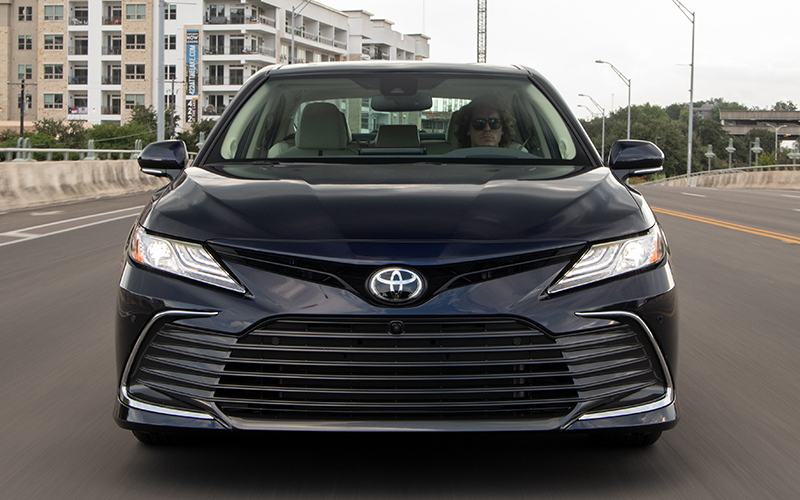
2021 Toyota Camry – toyota.com | Shop new Toyota Camry on Carsforsale.com


